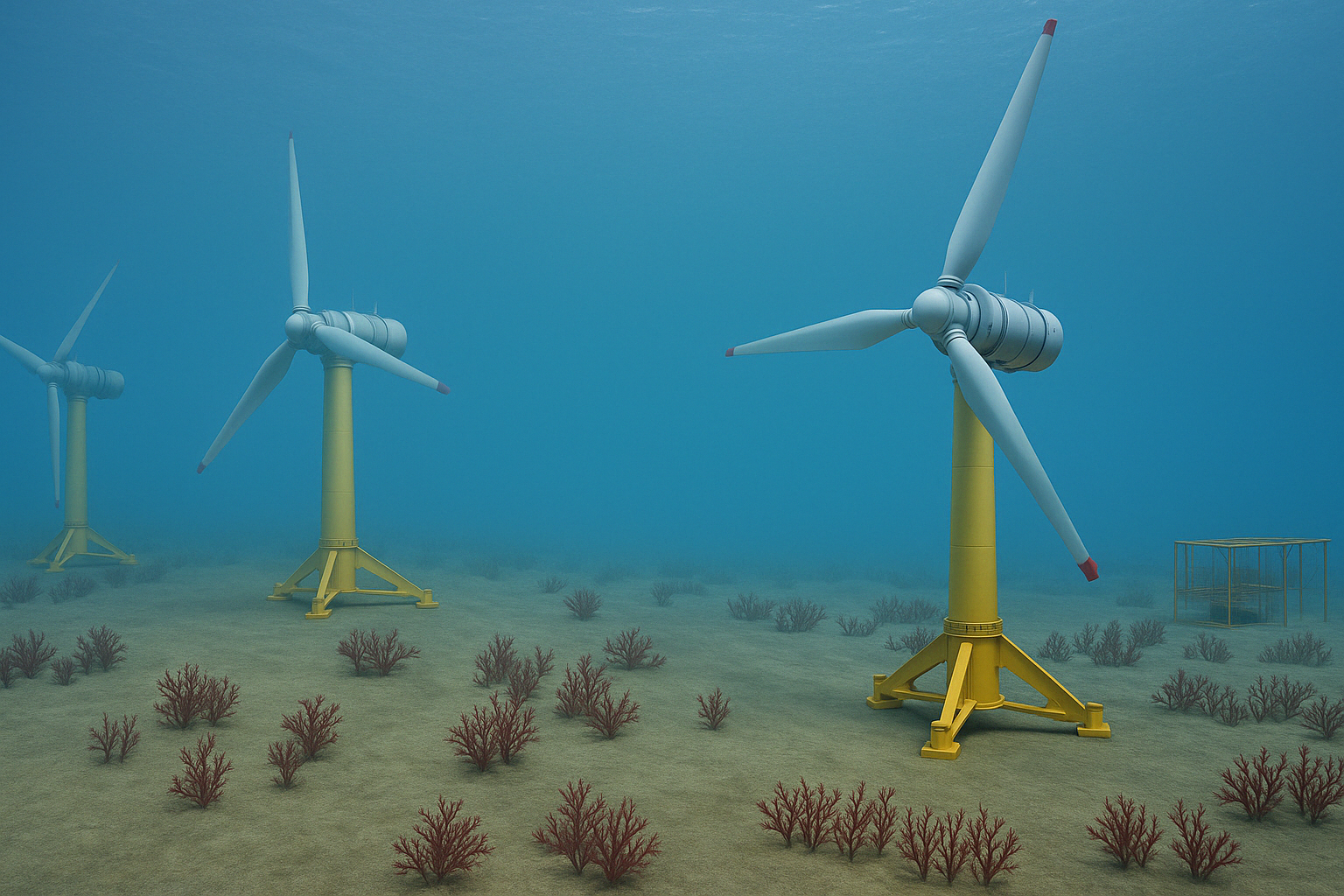A new tidal energy project off the coast of France could generate enough electricity for eight million people, without producing emissions. Known as NH1, the initiative aims to harness powerful sea currents in the Raz Blanchard Channel to produce 250 megawatts of clean energy.
Led by French developer Normandie Hydroliennes, NH1 is part of a growing movement to explore marine-based renewables. It involves installing four underwater turbines in the Mediterranean Sea. These turbines rotate in a continuous loop, capturing energy from tidal flows, one of the most consistent renewable sources available.
Unlike offshore wind farms, tidal projects can operate on a predictable schedule. That stability could help balance the intermittency of other renewables like solar and wind. NH1 also aims to minimise its environmental footprint. Concerns about marine life disruption were raised early on, but the project’s steering committee has stated that nearby ecosystems are not at risk.
The turbines sit 38 metres below the surface, deep enough to avoid interfering with shipping routes or surface activity. Engineers designed them using materials resistant to saltwater corrosion—an essential step for ensuring long-term durability. According to project experts, tidal generation offers a key advantage over wind: more predictable, steady output.
The location of the NH1 turbines is no accident. The Raz Blanchard Channel is known for having some of the world’s strongest tidal currents. Estimates from Euronews suggest the site could eventually produce 15 to 18 terawatt hours (TWh) of electricity each year. With further development, the region could reach 5 to 6 gigawatts (GW) of capacity—enough to power a large portion of coastal Europe.
Early monitoring suggests the turbines may even benefit marine biodiversity. Local fish populations have returned to the area, with some experts suggesting the underwater structures may serve as artificial reefs. While long-term effects of noise and vibrations are still under review, no major disruptions have been observed so far.
The project is also expected to deliver tangible climate benefits. Projections show a potential emissions reduction of nearly 58,000 tonnes of CO₂ equivalent. That figure positions NH1 not just as a technical achievement, but as a meaningful contributor to Europe’s carbon reduction goals.
With rising interest from other coastal nations, NH1 could serve as a blueprint for tidal energy worldwide, offering a scalable, low-impact path to decarbonising electricity.




